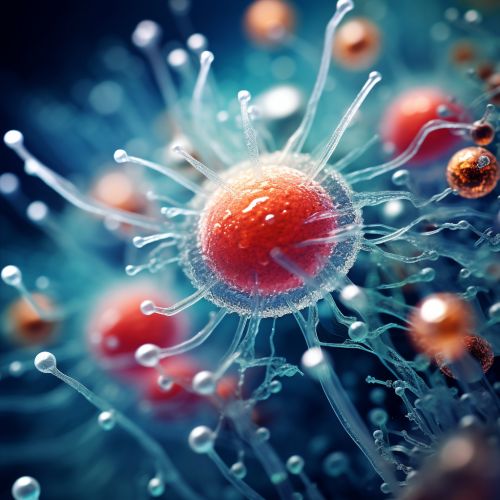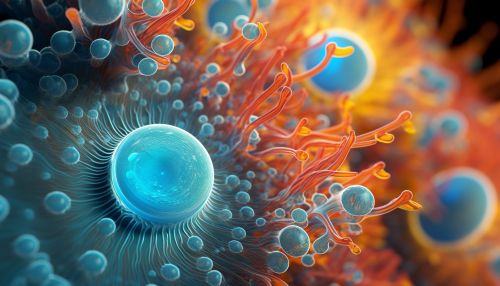Transformation (genetics)
Introduction
In the field of Molecular biology, transformation refers to a type of genetic alteration where the genetic material carried by an individual cell is altered by the incorporation of foreign DNA into its genome. This process is relatively common in bacteria, but can also occur in other types of organisms.


Mechanism of Transformation
The process of transformation involves several steps. First, the recipient cell must be in a state of competence, which may be induced by environmental conditions or by certain genetic mutations. The DNA to be transferred must be in the environment of the recipient cell. The DNA is then bound to the cell surface and one strand enters the cell, while the other is degraded by nucleases in the environment. Once inside the cell, the DNA can be integrated into the recipient's genome by recombination.
Natural Transformation
Natural transformation is a bacterial adaptation for DNA transfer that depends on the expression of numerous bacterial genes whose products appear to be responsible for this process. In general, transformation can be regarded as a form of DNA repair that protects against DNA damage, including that caused by UV light or chemical mutagens.
Artificial Transformation
Artificial transformation, on the other hand, is a procedure where the cells are induced to take up foreign DNA by exposing them to certain conditions. This can be achieved by a variety of methods, including heat shock, electroporation, or the use of chemicals such as calcium chloride.
Transformation in Various Organisms
While transformation is most commonly associated with bacteria, it can also occur in other types of organisms. In yeast, for example, transformation can be induced by the use of lithium acetate or electroporation. In plants, transformation can be achieved by the use of Agrobacterium tumefaciens or by biolistic methods. In animal cells, transformation is often achieved using viruses or chemical methods.
Role in Genetic Engineering
Transformation plays a crucial role in genetic engineering, where it is used to insert new genetic material into a host organism. This can be used for a variety of purposes, such as the production of genetically modified organisms or the study of gene function.
